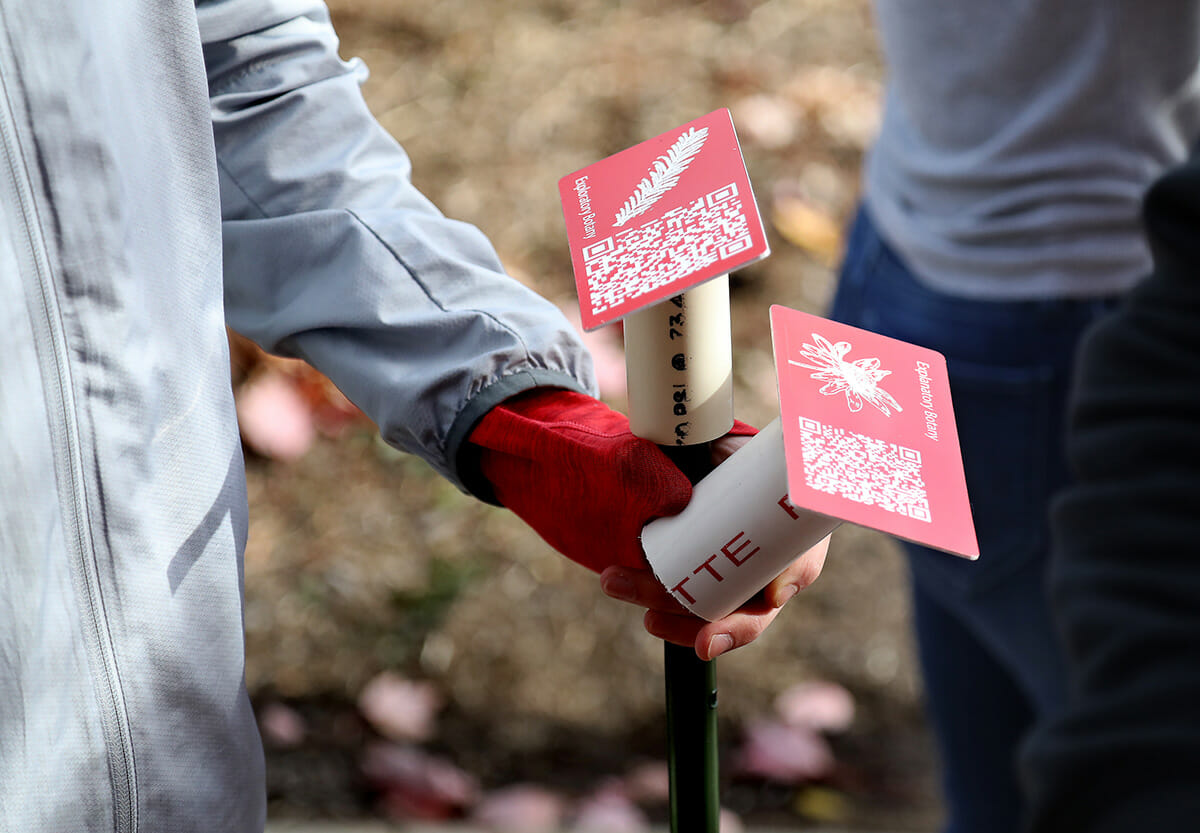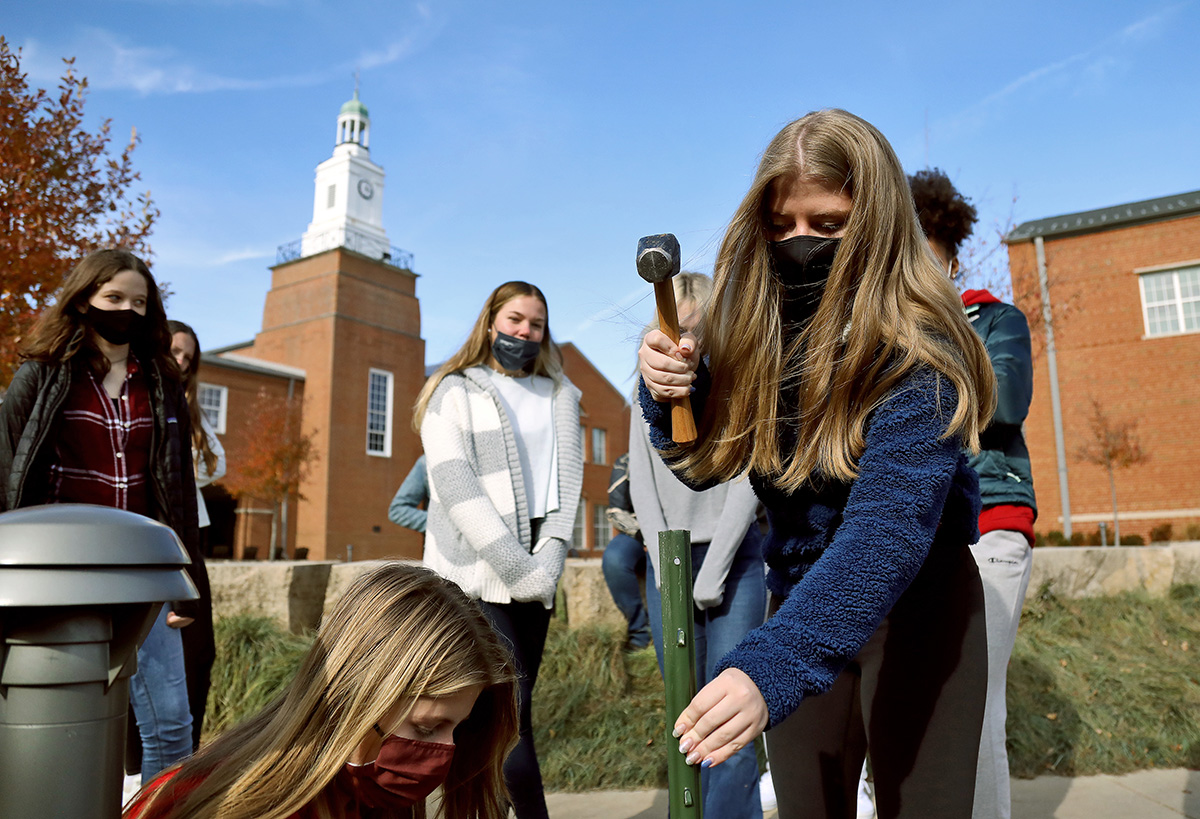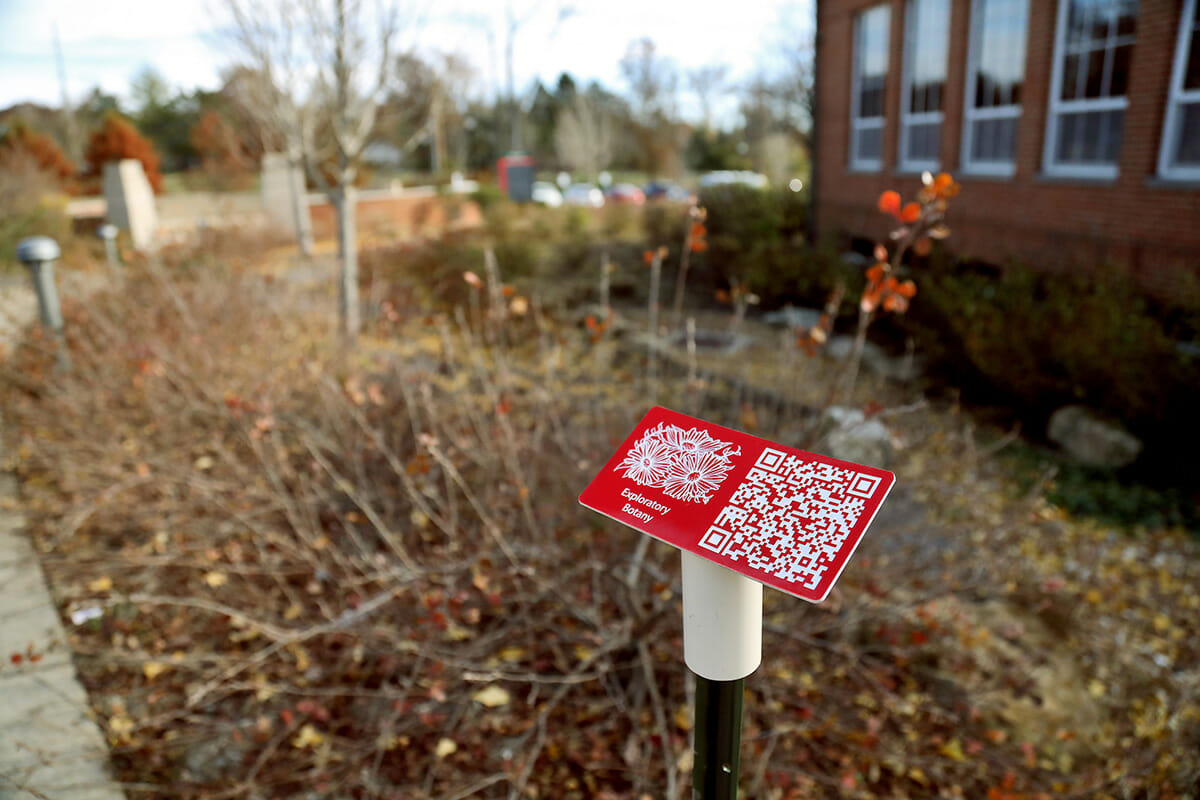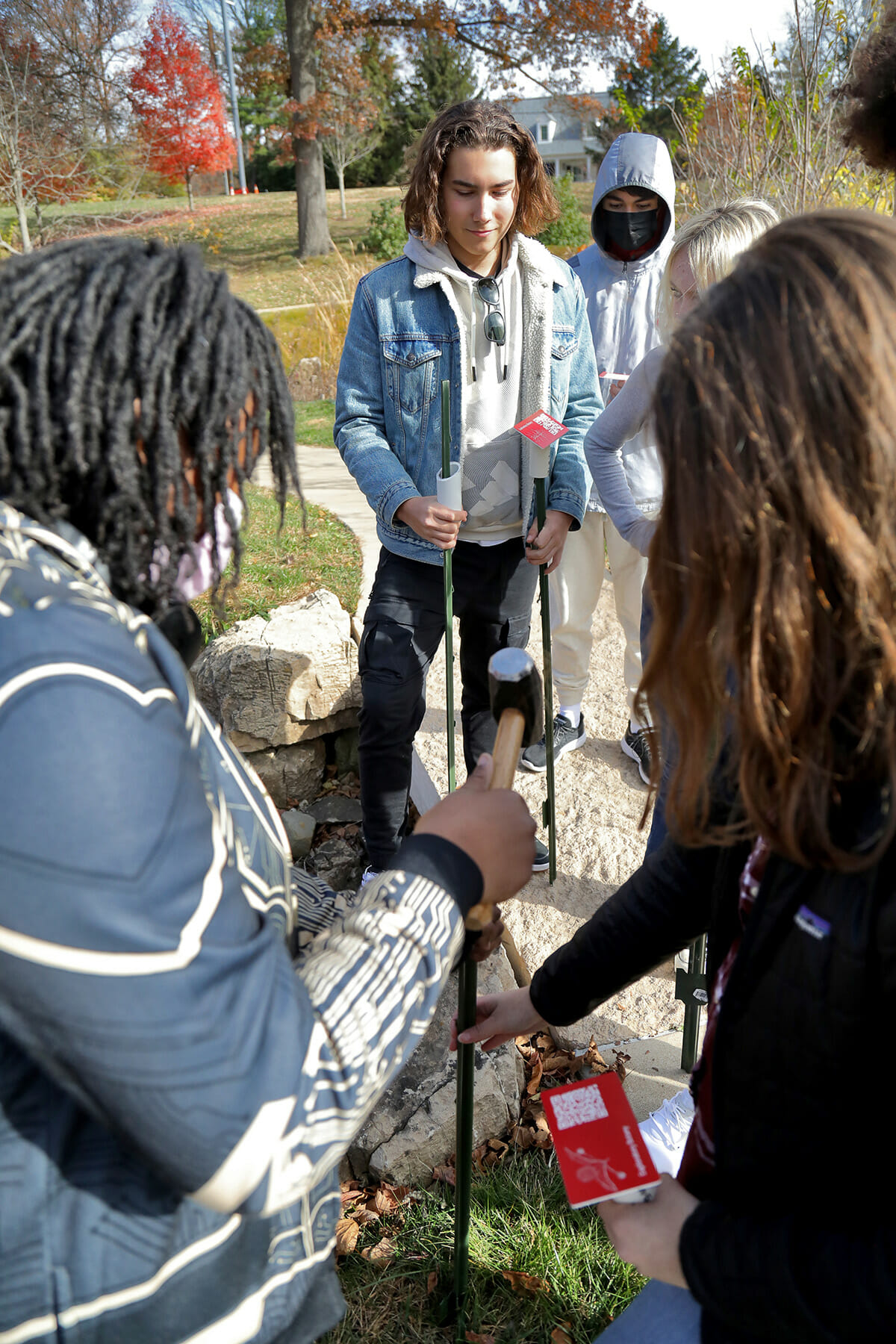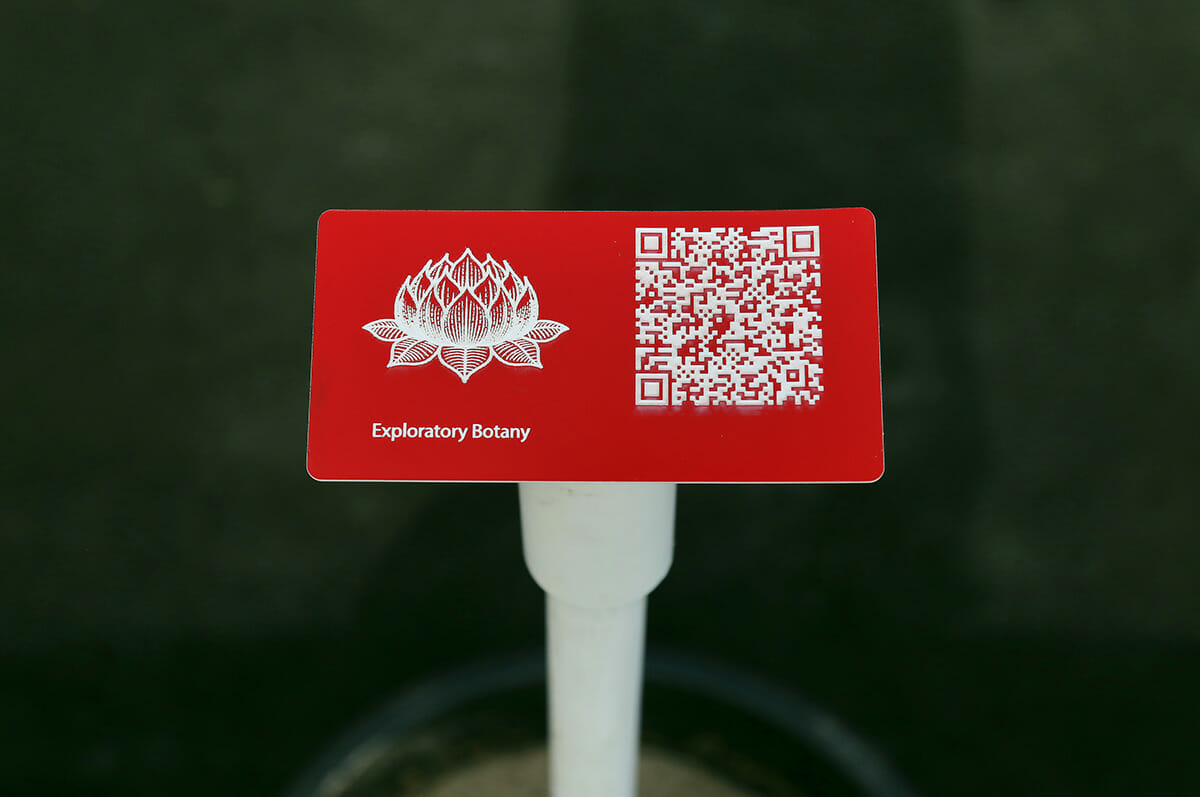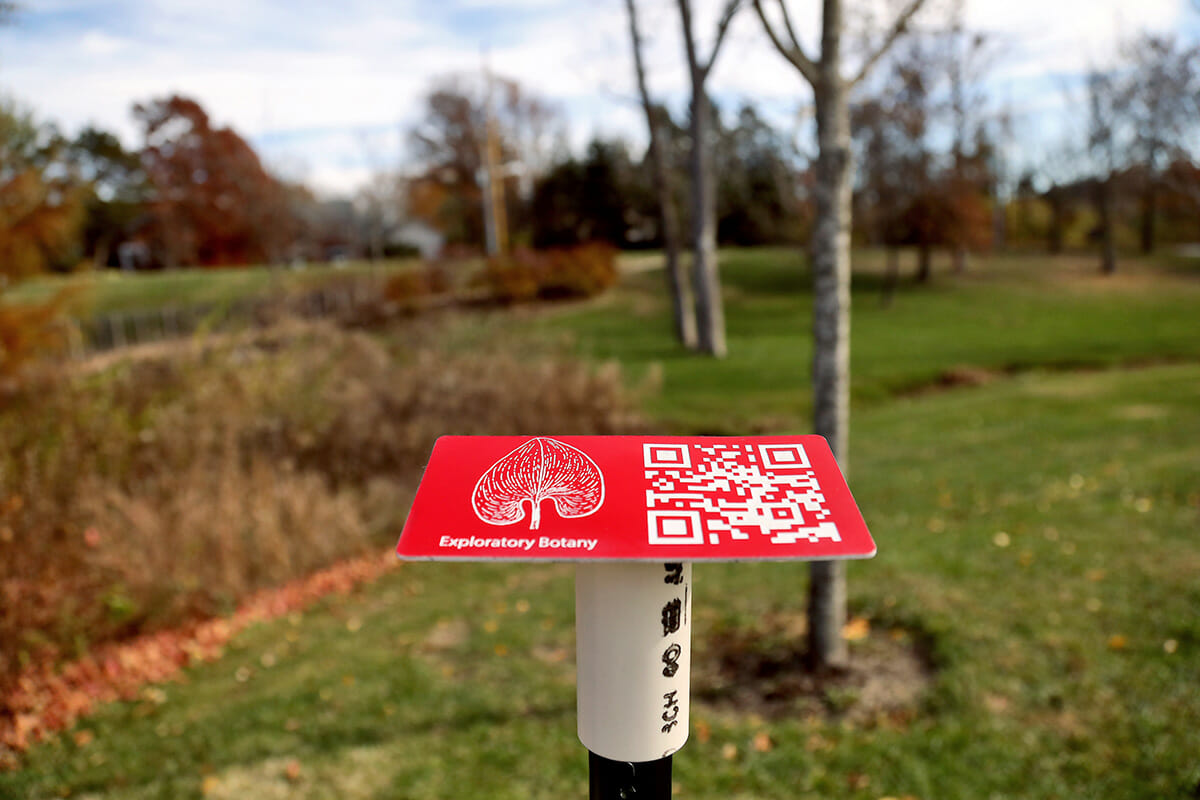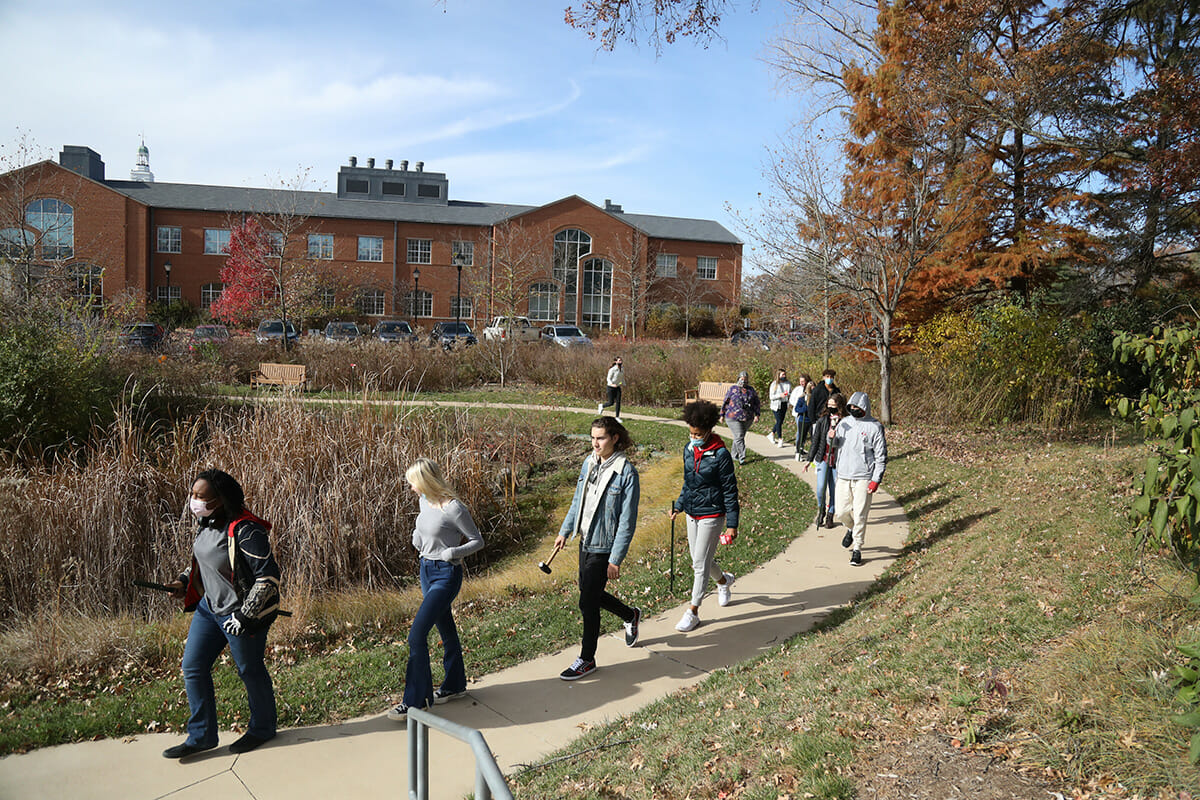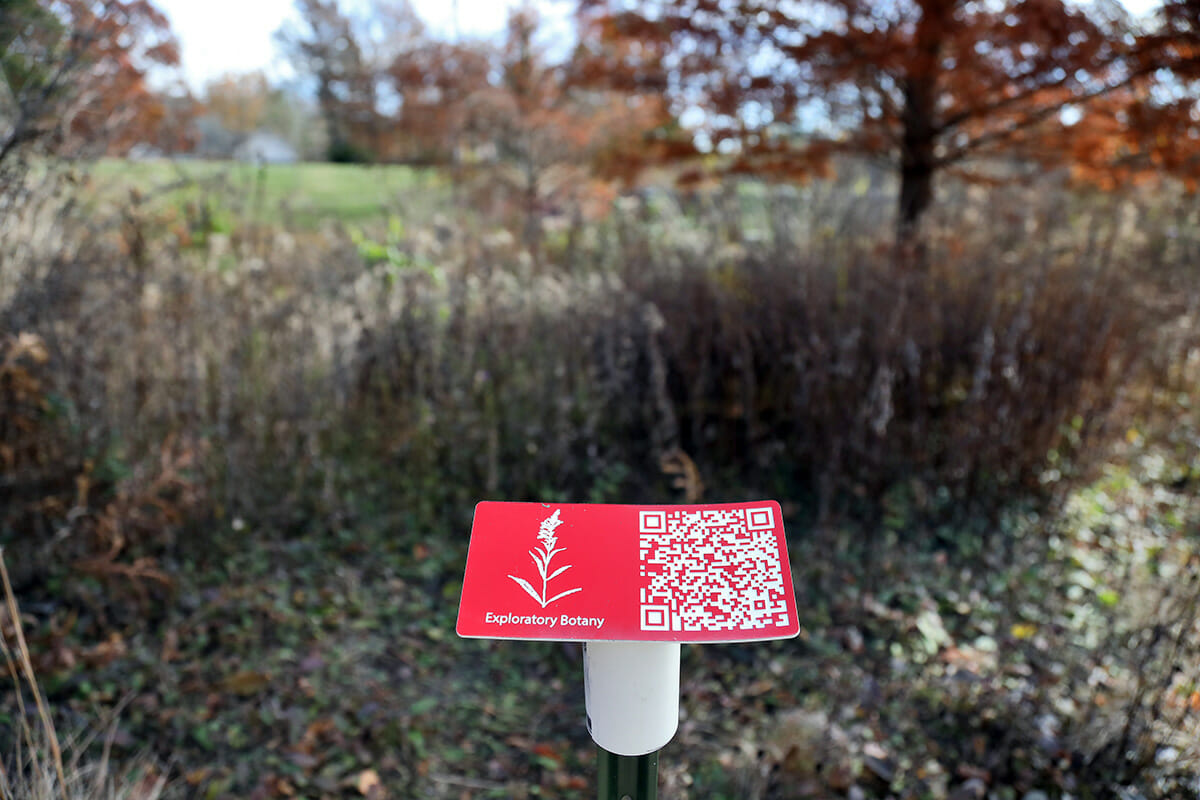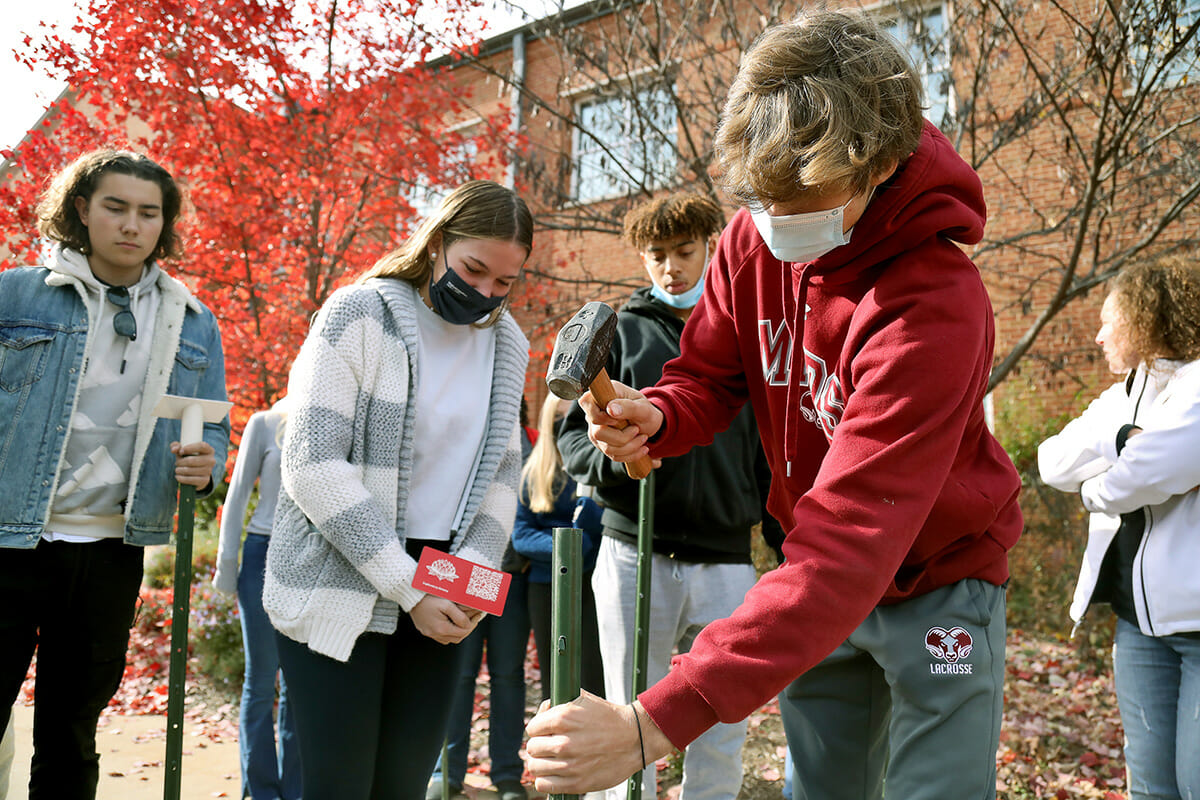With so many plant species on campus, walking through MICDS is always beautiful and can often leave you feeling curious about the flora. Upper School Science Teacher Laura Bradford and her Exploratory Botany class recently began labeling various plants in a growing effort to identify the foliage and educate people about the interconnection between the plant types and their importance in the environment and society.
“When everything was first planted, identifying the types of plants was often discussed,” Bradford said. “We knew the School deliberately planted native Missouri plants, but we hadn’t yet developed a strategy to identify them.” So Bradford and her class designed plaques with QR codes that they then placed in the landscape to quickly and easily help people learn about plant life. “When I took over this botany class I knew that a prior project had always been to create a virtual herbarium, so I ran with it and decided to add in the element of using only plants on campus.”
Students used the master document from Centerbrook Architects to initially identify the plants and decide which ones they wanted to research for the project. As part of their course work students had to study phenomena such as growth, reproduction, anatomy, morphology, physiology, biochemistry, genetics, and ecology, as well as the plants’ contributions to the scientific community. Before the plaques could be placed outside students used Google Slides to build web pages. “I assigned each student a blank page. They were totally responsible for researching the plant, learning its common and scientific name, and for the photography,“ Bradford said. “In addition to just learning the name of the plant, students found an example of the plant in some form of art. It might be a poem, or a book, or artwork, but they worked to find an engaging example of that plant in the real world.”
Students are excited to discover how the material connects to the larger environment and to their own lives outside of school. “I have gotten so many positive remarks from my students about this—one student told me about how she was running outside and literally stopped in her tracks because she noticed ‘her plant’ growing on the side of the road!” Bradford said. “She was so excited to tell her friends that she knew just what that plant was, that it was native to Missouri, and all she had learned about it. She was doubly excited to share that with me the next day at school.”
Perhaps our appreciation for the plants that surround us every day will deepen as we know more about them. “Many of us take advantage of the walking trail out in front of the STEM building, and now when we see a pretty flower or an interesting tree we can start to learn what it is,” Bradford said.
With 12 students in the Exploratory Botany class, the first round of plaques was limited to a dozen, but according to Bradford, “Each year we will add on to the herbarium by choosing more of the plants. I don’t know that we will ever be able to document every single plant, but I’d like to get a majority of plants and trees identified over the next few years.”
You can visit the herbarium online, but the project is best experienced by taking a walk around the MICDS Upper School where you can enjoy the scenery and learn more about our beautiful campus.
https://sites.google.com/micds.org/micds-virtual-herbarium/home

